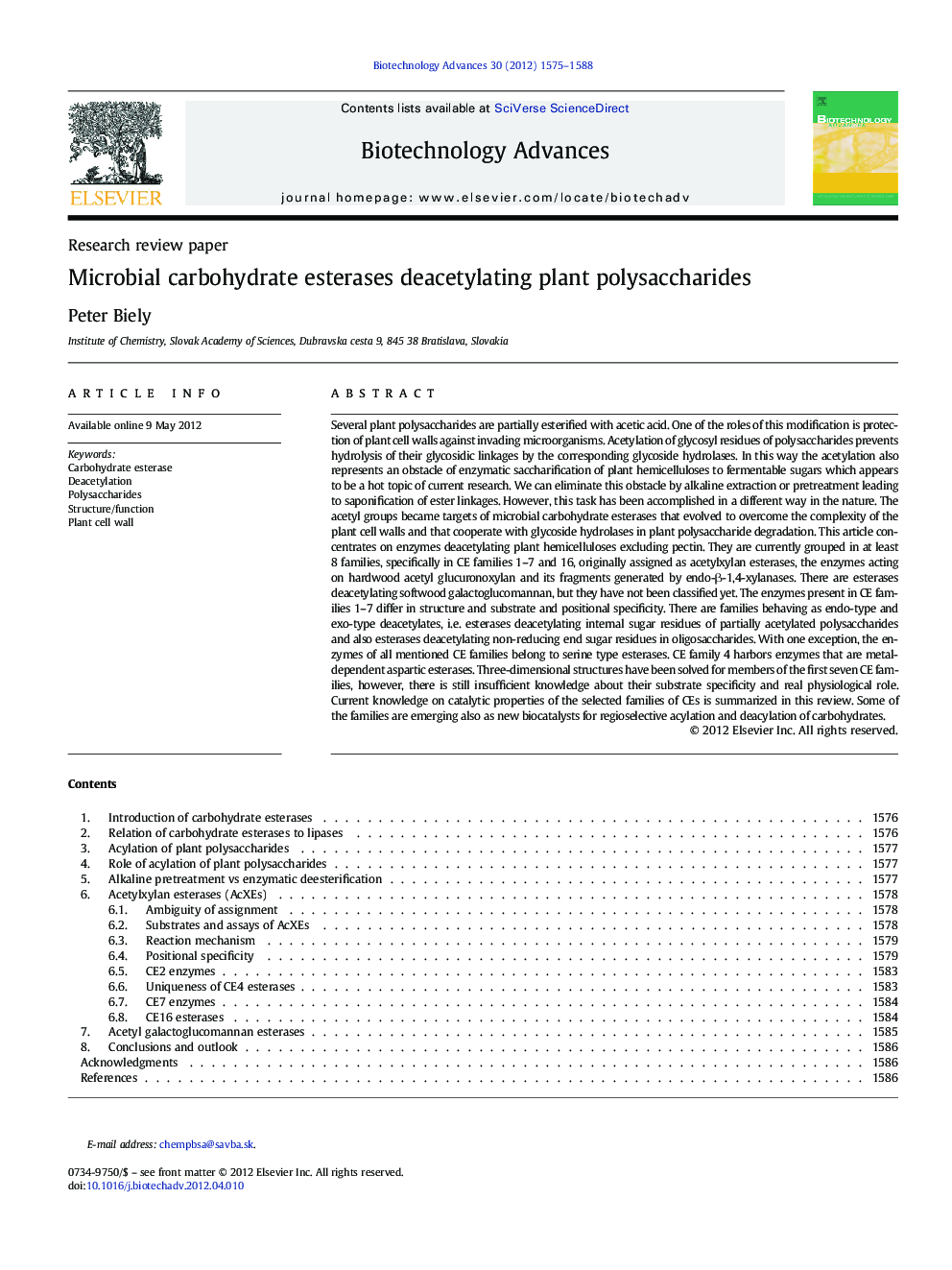| Article ID | Journal | Published Year | Pages | File Type |
|---|---|---|---|---|
| 6486760 | Biotechnology Advances | 2012 | 14 Pages |
Abstract
Several plant polysaccharides are partially esterified with acetic acid. One of the roles of this modification is protection of plant cell walls against invading microorganisms. Acetylation of glycosyl residues of polysaccharides prevents hydrolysis of their glycosidic linkages by the corresponding glycoside hydrolases. In this way the acetylation also represents an obstacle of enzymatic saccharification of plant hemicelluloses to fermentable sugars which appears to be a hot topic of current research. We can eliminate this obstacle by alkaline extraction or pretreatment leading to saponification of ester linkages. However, this task has been accomplished in a different way in the nature. The acetyl groups became targets of microbial carbohydrate esterases that evolved to overcome the complexity of the plant cell walls and that cooperate with glycoside hydrolases in plant polysaccharide degradation. This article concentrates on enzymes deacetylating plant hemicelluloses excluding pectin. They are currently grouped in at least 8 families, specifically in CE families 1-7 and 16, originally assigned as acetylxylan esterases, the enzymes acting on hardwood acetyl glucuronoxylan and its fragments generated by endo-β-1,4-xylanases. There are esterases deacetylating softwood galactoglucomannan, but they have not been classified yet. The enzymes present in CE families 1-7 differ in structure and substrate and positional specificity. There are families behaving as endo-type and exo-type deacetylates, i.e. esterases deacetylating internal sugar residues of partially acetylated polysaccharides and also esterases deacetylating non-reducing end sugar residues in oligosaccharides. With one exception, the enzymes of all mentioned CE families belong to serine type esterases. CE family 4 harbors enzymes that are metal-dependent aspartic esterases. Three-dimensional structures have been solved for members of the first seven CE families, however, there is still insufficient knowledge about their substrate specificity and real physiological role. Current knowledge on catalytic properties of the selected families of CEs is summarized in this review. Some of the families are emerging also as new biocatalysts for regioselective acylation and deacylation of carbohydrates.
Related Topics
Physical Sciences and Engineering
Chemical Engineering
Bioengineering
Authors
Peter Biely,
